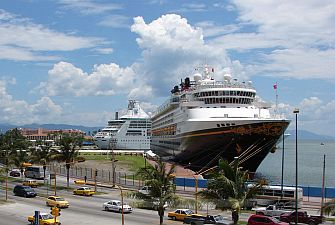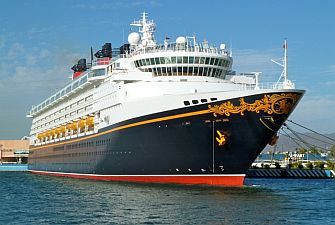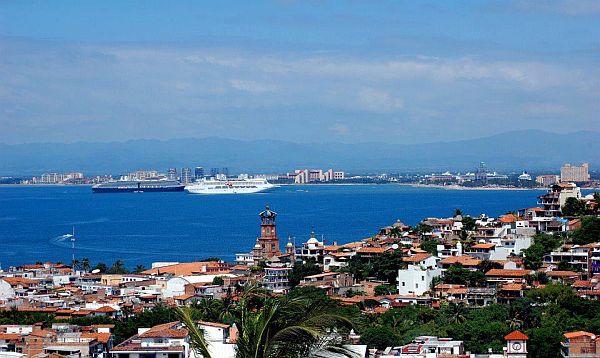In cruising's early years, it didn't get much more glamorous than a cruise on the Mexican Riviera. The popular TV show "Love Boat" showed Princess ships and the celebrities they carried, stopping at exotic ports such as Mazatlan, Puerto Vallarta, and Acapulco.
Today, you'd be hard-pressed to find Acapulco on a mainstream cruise itinerary; in 2014, only a handful of luxury lines such as Regent Seven Seas, Silversea, and Oceania, planned stops at the Pacific Ocean resort town. Concerns about the safety in some ports, along with negative perceptions and increased competition from destinations elsewhere, moved Mexican Riviera itineraries off some cruise line's calendars all together.
The numbers tell the story. Puerto Vallarta went from having a banner year in 2008, when 180 ships arrived, to a mere 82 in 2013. Mazatlan suffered a significant financial hit when a string of violent incidents prompted cruise lines to pull out completely in 2011, losing all of the 520,000 passengers that had visited in 2010.
Even Cabo San Lucas, which experienced a boom in tourists drawn to its hotels, resorts, and bars, has seen its cruise business falter. In 2008, nearly 400 ships visited Cabo; this year, that number is down to 112.
Those figures sound dire. But the region received a major boost when Carnival announced it would be sailing in the Mexican Riviera year-round starting in October - including several stops at Mazatlan. The ports have also been taking significant steps to attract more cruise business, including the following:
Working Together
With a large expat community and a thriving restaurant scene, Puerto Vallarta has avoided the perception problems that have hampered the other cities along the Pacific coast. But to keep ships arriving, tourism officials realized it was time to reach out beyond state and local borders.
Last year, the three states involved in cruising - Baja Sur, Sinaloa, and Jalisco - formed an organization called Route Committee for the Pacific, said Carlos Gerard, the Puerto Vallarta director of tourism.
 |
"We used to see each other as competition, but now we need to see each other as a team. What happens to one port affects the entire team," Gerard said. "We're willing to work as a whole."
More Port Promotion
Besides developing a better relationship with the cruise lines, the three ports are actively working to promote the itinerary as a whole, Gerard said. This year, each port is contributing $200,000 for promotion and asking for a matching $600,000 from Mexico's federal government.
"It's something we should have done before, but it's all about the will to do it," Gerard said. "The ‘Mazatlan effect' did create consciousness between the states."
Increasing Communication
When cruise lines left Mazatlan in 2011, getting them back within three years "seemed almost an impossible task," said Frank Cordova, secretary of tourism for Sinaloa. "We sell fantasy. It's hard to sell fantasy when people have a negative perception."
Cruise lines told him it could be five years before they even considered returning.
Despite the bad news, Mazatlan and Sinaloa officials got to work. They hired more police, Cordova said, and paid them better to reduce crime rate. They worked with the Organization of American States in a program that specializes in helping destinations with image problems. And they sent cruise lines bulletins every month about improvements that were being made and increased press outreach.
"The first cruise line to consider coming back was Norwegian," Cordova said.
After an initial meeting in 2012, the line committed to bringing Norwegian Star to Mazatlan in late 2013 (although Holland America's Veendam was the first ship to return in November 2013.) Azamara followed in 2014; in 2015, Princess and Carnival will join those lines.
"We've become a model in Mexico and Latin America in how we were able to turn things around," Cordova said. "For every negative story that appears, we have 30 good stories." Still, he doesn't think the port is out of the woods yet. "Whenever anything that could hurt us happens, no matter how small, people are biting their nails."
Improving Passenger Experience
 |
In the meantime, the city developed the "blue line," a painted stripe on the roads that directs passengers who want to walk into Mazatlan's colonial center. "Blue shirts" - expats who speak English - have volunteered their time and meet ships when they arrive to help passengers get their bearings.
Each port is also doing more to make sure cruisers understand what makes them special.
In Puerto Vallarta, cruise ships are greeted with mariachi bands, a signature of Jalisco (the Mexican state is also the birthplace of tequila.) Next year, all tour operators and taxi drivers will wear the same logo to promote customer confidence, Gerard said.
Highlighting the Culture
Even in Cabo, cruiser tastes are changing; on cruise line comment forms, some people are complaining that Cabo isn't "Mexican" enough, said Fernando Hoyos Romero, port facility security officer. The comment makes sense when you consider 20 percent of the population in Cabo is from the United States or Canada. "Cabo's local dish is fish tacos," he noted, wryly.
To counter that backlash, Romero said he expects operators will start looking into tours that tap into greater Baja culture. That's particularly important as Cabo's Asian tourism base continues to grow; 10 percent of the area's visitors are from Asia, and they are less likely to indulge in Cabo's drinking and party culture.
In Mazatlan, officials know many people come for the beach, but it's the history that makes it special.
"We're a real city with roots, tradition, and culture," Cordova said. "If you have enough money, you can build a Los Cabos or a Cancun. You can't build a Mazatlan. How do you build a center square that's 400 years old?"
One thing is for sure: The city will celebrate every ship that does arrive.
"It's like when you take your wife for granted. We didn't take care of our cruise tourists," Cordova said. "We didn't take action until it was too late."



